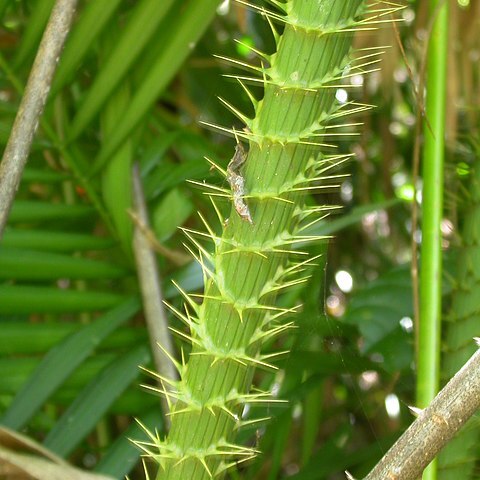Clustering climbing palm to 45 m tall; stems to 5 cm diam. Leaves ecirrate, to 3 m long, rachis arched; leaf sheaths flagelliferous, with needle-like green-brown spines to 20 mm long, arranged in oblique combs; petiole 0–2 cm long; rachis channelled and smooth adaxially, with hooked yellow abaxial spines. Pinnae 35–50 each side of rachis, regularly arranged, crowded, linear-lanceolate, to 50 cm long, to 30 mm wide, acuminate, rigid, light green to yellowish green adaxially and abaxially, with prominent midrib. Staminate and pistillate inflorescences to 6 m long; lateral branches distichous, to 50 cm long, with stout single or paired hooks. Staminate flower to 6 mm long. Pistillate flower to 9 mm long. Fruit globose, to 13 mm diam., cream to yellow.

